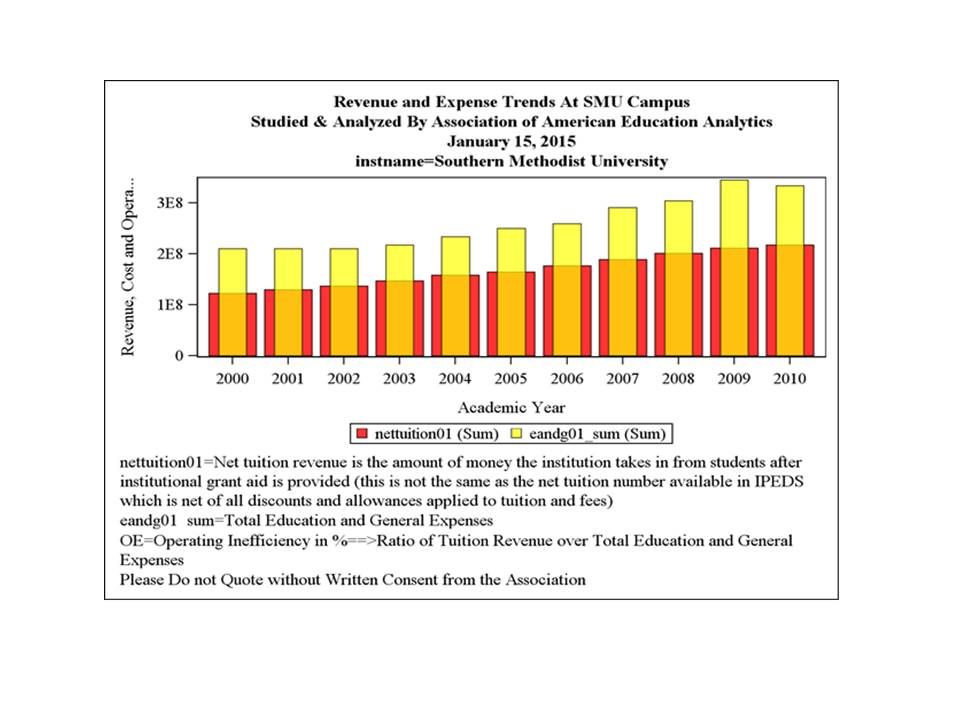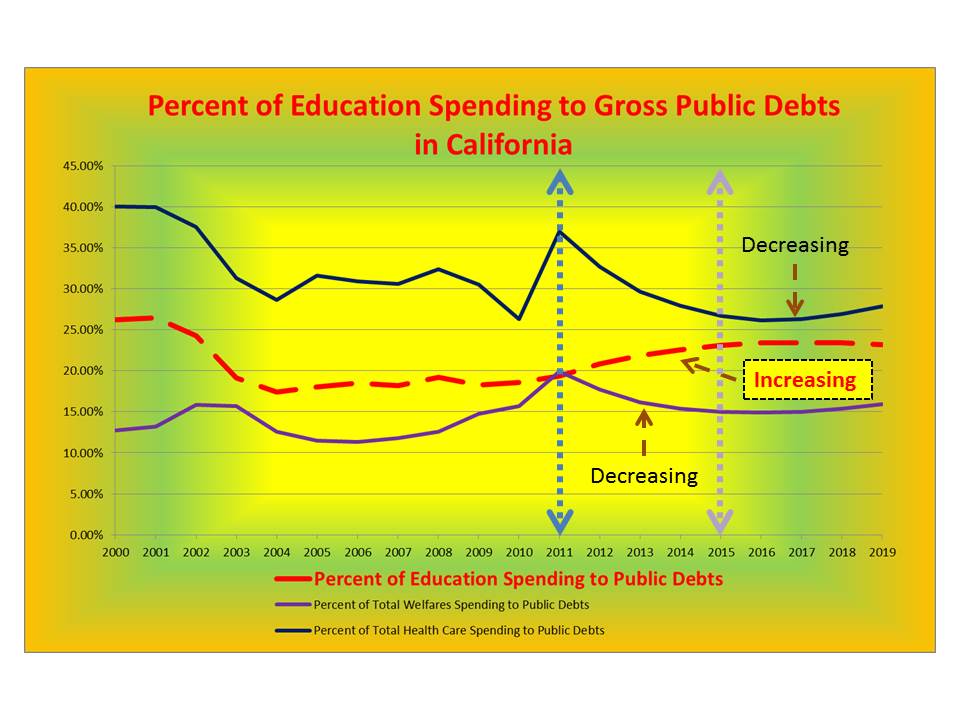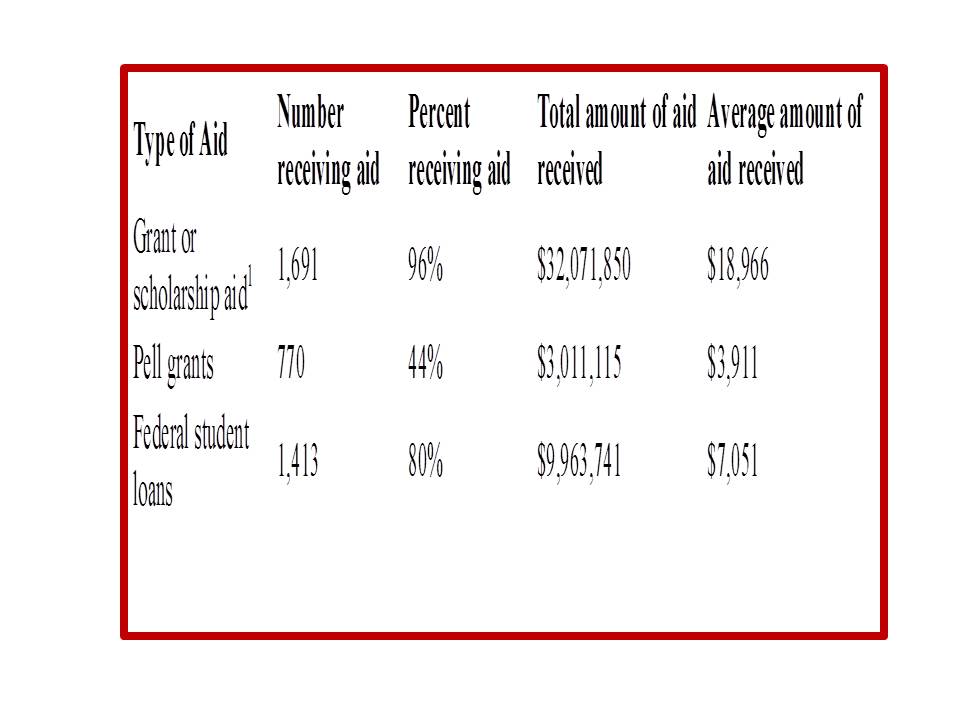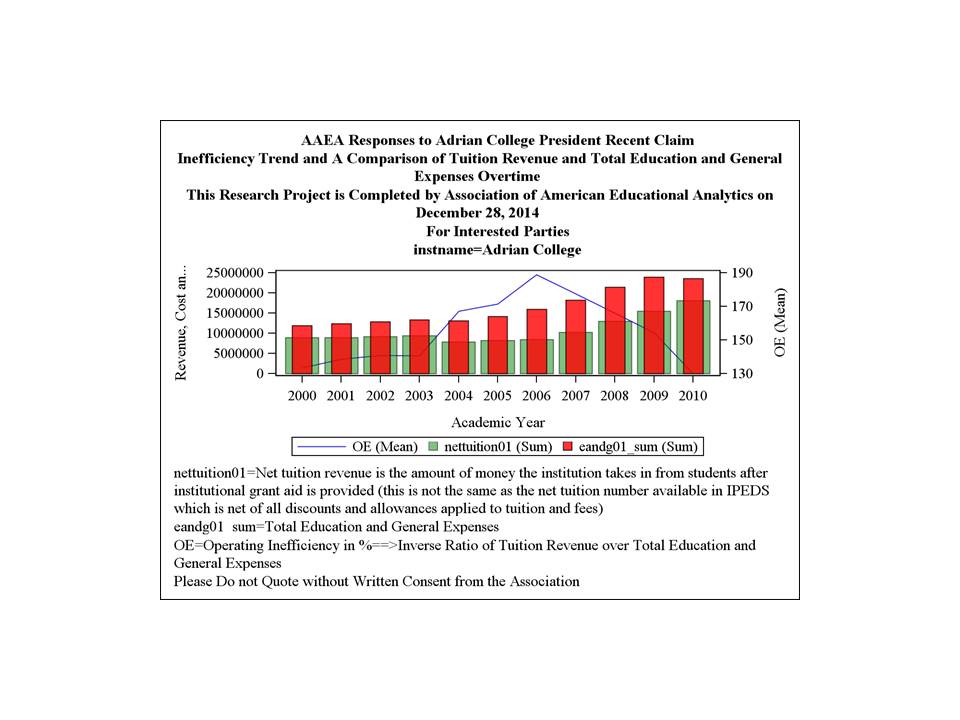A couple days ago, the Association has written in its blog on state university budget cuts. Today we learned another fact of college closures. If one analyzes the timeline, all that is happening now starts with skyrocketing tuition (due to inefficiency and applying an out-dated mindset) followed by gigantic student loans accumulation. Now one will see the negative and direct impacts for not controlling the operational inefficiency when these colleges are still have time to do so many years ago. When the consumers no longer able to pay the price, it will negatively affect student enrollment. As we have mentioned on our previous blogs, the new dynamics in the industry will first affect the private Liberal Arts Colleges for they are the most vulnerable institutions with limited support from the tax payers’ money. The longer the marginal institutions wait, the more probable that they can be wiped out from the competition. This structural changes will not stop until some of the most inefficient organizations close their doors until an equilibrium level is reached and Pareto Improvement is met. It could take many years, and once it settled, there will only be big and the most efficient players are staying in the industry.
Category Archives: Increasing Student Loans
End of Tenure System: A New Reality Has Arrived
The Association celebrated its second year in March with more than 125k viewers. This shows what we have discussed in the blog is the interest of many people and the American public. Recently we read, the State of Tennessee Board of Region has discussed the possibility to “De-tenure” the faculty members within its system. Simply put, due to budget constraint, the tenure system may no longer relevant. On March 18, 2013—exactly about two years ago, the Association has written an article on the topic to remind the players in the industry what are coming their ways. Nothing wrong with the tenure policy, so long the money is available to support it. Budget limitation does not just happen in TN, but in all other places as we have mentioned on February 11, 2015. Those who are negatively impacted by the policy changes could be very well disappointed, but the new reality has come and the policy makers are under pressure to deal with it.
Time for Certain US Colleges to Merge?
About three years ago AAEA has predicted that US colleges are going to have difficult time financially if they keep applying their “old” wisdom. Again and again we saw what we have predicted about two years ago became a reality. What surprise us was that none of these colleges have taken enough steps to cope with the potential problems until they got hit on the face. Even though we have presented clear evidences to support our finding, the Association saw little efforts to curb the spending spree and college mismanagement. Instead of proactive, they are reactive as shown recently in this article. If an institution keeps increasing the price of its product, sooner or later the consumers just do not have the ability to pay the price that they are charging (though they assume students will keep taking loans). What happening in the industry is nothing but the adverse reactions of the reckless pricing policy that these colleges have done in the past. We have argued rigorously and consistently that passing all the operational inefficiency to the consumers, to the tax payers or private contributors are things of the past. If these colleges are smart, perhaps they need to start thinking which peer institution (or competitor) that they can merge to (though this will not happen easily). By doing so, they can reduce all redundancies which will make the institution leaner. For example, when two colleges, A and B merged into one new institution, say C; then the new institution will only need one college president and one of each cabinet member, instead of two. That way the legacy of both institutions will be preserved and written on the history book of College C. It is pretty interesting to see how the restructuring process will bring the US Higher Ed to. Surely, there will be many small, private non-profit or Liberal Arts Colleges need to close their operation. There are too many of the same services offered in the same market. Things will get even gloomier if edX, Udacity and Coursera are able to streamline their programs and become the power house to deliver free online classes and that their issued certificates or diplomas are proved to be worthy and, therefore widely received by the employers. Welcome a new reality!
US Colleges Budget Cut
It is very interesting to note that recently one state after another is facing budget problem which negatively affect the US colleges’ operational budget. It started with UC System followed by others such as Washington, Wisconsin, Louisiana, Illinois and the last we heard was from the state of South Carolina where the state House Budget Committee has voted to temporarily close South Carolina State University. Poor management and applying the out-of-date approaches are the common cause of such troubles. The Association has informed the players that competitive environments where they are operating have experienced massive phenomenal changes. Therefore, there are no questions that past approaches or strategies may not work to deal with the new reality. In addition to declined enrollment trends and lower graduation rate, college decision makers are also facing budget shortages which may cause potential course reductions and faculty lay-off or any combination of these unfortunate options. Postponing taking the new approaches in managing the organization will only make things go from bad to worse.
The Association has anticipated such a situation to occur, so it has conducted intensive study based on real data and the results have been shared to the American public at least two years ago. It is up to the school administrators to make strategic changes or just go BAU.
Spending Components and Graduation Rates at Selected Public Universities in California
The good news finally came that the two administrators will sit side by side to find out the way to manage higher education in CA more efficiently. That what we call it civilized way of managing public education institutions instead of using threats or holding the students as the hostages. As part of the Association’s contribution to the American public, we have published many research results on the issues and will continue to do so. The driving factor of our analyses is nothing, but motivated by and for the good of the American public. We do not have the interest on the political side of the issue, but to the public policy which will maximize the social benefit above the cost i.e., to max out the return of public investment by an optimal allocation of resources such that at least Pareto Improvement (PI) can be achieved.
Right now, the public sees that PI is attainable and it is not something that is true in theory. Based on ten-year data submitted by each institution to the regulator agency we look pretty closely on the spending structure at each UC campus under the System. While the spending behavior is different by institution, one can see pretty clear pictures from the figure below that, in general, the largest spending of the budget is on instruction. The regulator has defined:
1. Instruction_share: Instruction share of education and related expenses.
2. Admin_share: Academic and institutional support and operations and maintenance share of education and related expenses.
3. Studserv_Share: Student services share of education and related expenses.
While this graph only shows the big picture, one needs to analyze deeper to understand the real problem behind each spending category. The University of California at Merced stands out on its administrative expenses way above those of other institutions and it did not have the graduation rate information. UCLA’s instruction expenditures are above those of others’, but it has the highest graduation rate (6-year) as well. This simple information can be used to (1). apply performance based funding; (2). be used to make strategic decisions; (3). to initiate the application of LEAN across campuses and departments. For example, how can UCLA justifies its 71.8% spending for its budget on instruction. Which of the spending items on the instruction expenses make up most of the expenditures? Is it faculty members’ salary? Which faculty members i.e., Assistant, Associate or Full Professor?

Another College Downsizing: Southern Methodist University
The Association of American Education Analytics is not surprised to learn that Southern Methodist University is going to cut 100 employees as recently announced. The Association has published the study many months ago on the potential challenges that most US colleges are going to face in the future. The results and the conclusions of the study have become a realty now. Will there be more college closures, mergers and downsizes in 2015? Only time will tell.

Free Community Colleges Tuition: Too Good to Be True?
The 2015 new year begins with big education news splashes. Recently the administrator just announced the possible of free tuition for community colleges students. This program basically copied from what the state of Tennessee is trying to do. The Association has discussed this topic many months ago. For detail of the discussion please click here. The administrator has introduced many ideas from CAR then it was water-down to PIRS. The ideas will keep floating until it runs to the open ocean, i.e., nothing is going to happen. It won’t surprise anyone if this new idea is just trying to create new media hype with the probability of success is not that great because it does not solve the root of the problem that the US Higher Ed is facing now. If adopted this idea will push even further from solving the real problem that the Uncle Sam is experiencing right now which is college inefficiency and campus reckless spending culture. This is just another bail-out program where the institutions can increase whatever the price they want them to be and the tax payers will pay for the price tag, instead of the students. Surely enough, this creates potential conflicts of what PIRS program that they are trying to introduce to the public. As results, college cost will keep increasing, skyrocketing of inefficiency, and more and more for-profit colleges will enter the industry because they can make enormous margin from this price guaranteed program. This will be the greatest business opportunities if one needs to make money easily. This program sounds too good to be true because it will dry the Uncle Sam’s already tight money. If the country has to take $303 million away from the Pell Grant to fund some other programs, then one might ask where the potentially $60 billion fund will be coming from?
State and College Administrator: The Case in California
This morning we read an opinion article “if Californians have to support the Governor’s or the UC President’s idea on the future higher education in the state”. Yes, we agree that finally UC gets budget attention for the good of the students. Without data, anybody can make his own theories and suggestions. AAEA has compiled and completed research many weeks ago and we are sure this research finding will be shared at the right time. It is then the perfect time to share it to the American public.
The chart below shows pretty clear that public spending on education has been pretty stable until 2011. After that year, the spending has increased quite significantly and it is projected that it will keep going up a couple years before it levels off. As the pool of (tax) money will always finite, increasing spending on public education in the state has largely supported by taking away from other posts. In this example, we just showed it may have come from health care and welfare. During the same period of time, these last two posts have significantly decreased while spending in public education has moved toward the other direction.

Will Adrian College Be Able to Deliver Its Promise?
Recently, Adrian College president made a very interesting statement that said “The College will pay all or PART of the student loans of its graduates if they cannot find a job that pay more than $37,000 a year. This statement has been nicely prepared where the escape clause is part of the big marketing campaign. Let us check the latest numbers which are taken from the College Navigator.
All Undergraduate Students: Table 1 – Aids Received

Based on this fact, let us calculate if the College is able to keep its promise. Make it simple, no tuition, fees or room & board increases and retention assumed to be 70%.
• The amount of total aids received from the federal government (for those who graduate in 4 year): ($2.8million * 4 year * 20% )*70%= $1.56million.
• The amount of total aids received from the federal government (for those who graduate in 6 year): ($2.8million * 6 year * 34% )*70%= $3.99million.
If none of the graduates make $37K or more on its first job, right after college then Adrian College, according to its administrator statement has to pay $5.55million ($1.56 plus $3.99 million) back to Uncle Sam (assuming interest is zero). Suppose that 75% (this is really fantastic) of its graduates earn more than $37K a year then they still have to pay back to federal government about $1.39million (25% out of $5.55million).
The question that one has is where the money will be coming from because in the past 10 years (look the chart below), the College has always been in a red. The average deficit in the past 10 years was $6.5million. In such a case, the loop hole clause (“The College will pay all or PART of the student loans of its graduates) will be used in that the College may just pay part of it. The school can pay $100, $10 or even $1.00 and the students have to pay the rest. Therefore, the administrator statement is correct in that the College pays part of the student loan as it has promised, even if it is only a $1.00. The bottom line is that this is another example of misleading statement. Several other points that readers have to pay attention of are that the administrator says the College will pick 30, 40 to 50 students (NOT All Students) to begin with. How to decide who are eligible to participate in the program has not been mentioned yet.
Check before you buy is the words of wisdom. This could be an example of a marketing gimmick comes out of desperation to jack the enrollment up (please read here for recent Gallup poll results on Liberal Arts Colleges enrollment challenges).

PIRS, Affordability and Zellner’s SUR
The Association published an article on December 19, 2012 on PIRS. We have said that among 11 factors that make up the rating, one can summarize them into three groups which are:
a. College Accessibility (point #1 to 4).
b. College Affordability (combine point # 5 and 6) and
c. College Accountability (combine point#7 to 11).
Utilizing publicly available data, the Association has completed the most recent research on PIRS. We utilize Zellner’s Seemingly Unrelated Regression (SUR) econometric analyses to determine various relationships within different groups of variables or metrics. There are 33150 observations in the data set. But, some of the colleges did not consistently make their data available. In other instances, several of them have changed their names. After the process of cleaning, the number of observations dropped significantly. One may think that these observations are randomly available for completing the analyses. They represent broad locations and type of schools in the US. All type (4, 2-year and others) of colleges from the following states are utilized in these analyses ME, MO, MT, ND, NE, NM, OH, TX, VT and WV. As long as the schools have great quality of data, then their information will be used in this study. All variables with monetary unit have been transformed into constant dollar of 2010. Graduation rate and Pell grant variable are a ratio variable. The estimation results on Affordability Equation are shown below:

